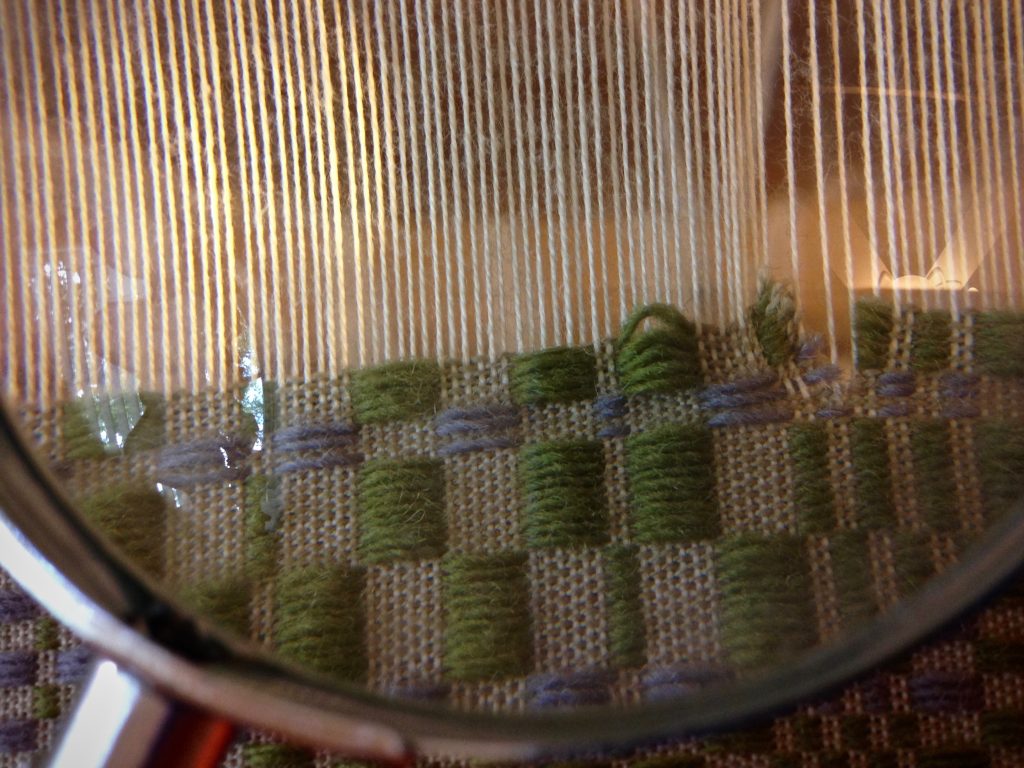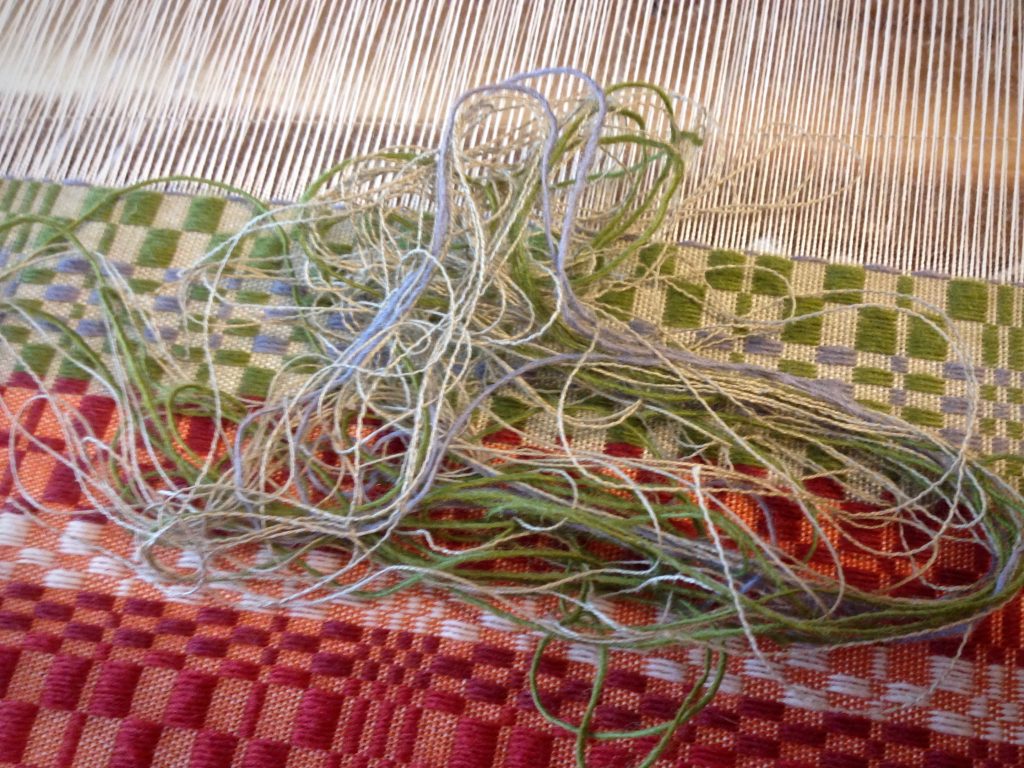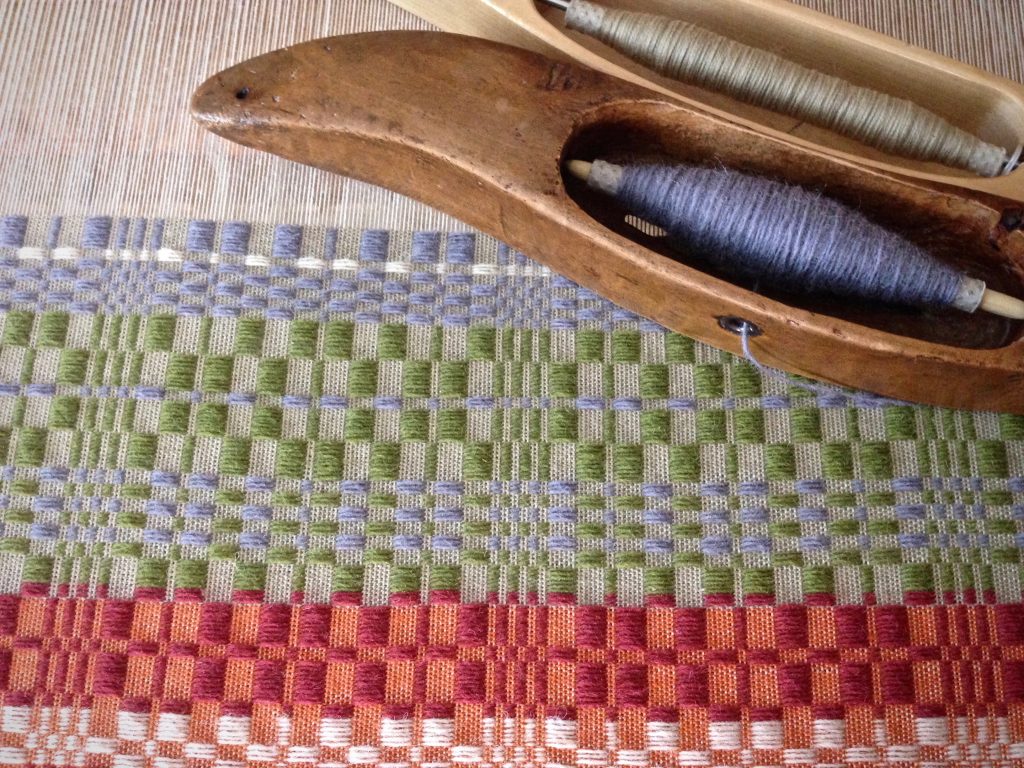I almost kept going. But something was off. Maybe the tabby hadn’t been beaten in as tight between the lavender pattern picks. In that case, a few more rows would obscure the slight difference. I did not want to undo; and wishful thinking tempted me to avoid taking a closer look. Sensibility won, though. I did stop to examine the cloth.

Even under close inspection, my eyes could not identify the error. I struggled to see the fine details. Magnifying glass to the rescue! Magnification revealed two extra tabby picks. Aha! Two fine threads out of place are enough to throw off the pattern. If not corrected, this errant line across the finished cloth would draw the attention of every eye. Knowing precisely where the error is gives me courage to face the necessary operation. Snip, snip, snip. Undo. Fresh start.


An honest report tells it like it is. When we are trusting the Lord, we have courage to stop and examine errors, bypassing wishful thinking. Faith is like a magnifying glass that enables us to see clearly. Courage comes alive through the eyes of faith. The difficult and painful process of undoing errors and making corrections is worth it when you consider the high value of the finished fabric.

May you catch your errors while they can be undone.
Honestly,
Karen

Karen: why didn’t you just unweave it? no loss of thread that way. just wondering? snipping like that leaves one open to acidently snipping a warp thread. May all your errors be noticable before it’s too late to correct them. The piece is beautiful, I’m looking forward to the finished piece. LP&J, linda
Linda, That’s a great question. Snipping the weft does carry risk; and I did cut a warp end once doing this. The reason I do it is that removing wefts this way is less abrasive on the warp ends (arguably), especially ends at the selvedges. With this 16/2 cotton warp, I want to minimize abrasion which can lead to broken warp ends. On warps with coarser threads, I do often un-weave unless it’s very far back, in which case, clipping and pulling out wefts is faster.
Thank you!
Karen
I don’t know if this is what you already used, but would using a seam ripper reduce the risk of cutting warp threads in this process? In sewing I feel I can better control which threads are being cut when I use a seam ripper.
Elisabeth, I haven’t tried a seam ripper. I loosen the warp tension before I do the snipping, so I’m not sure if a seam ripper would do the job. I’ll try it, though. I have tried several tools–my Gingher snips, a small scissors that has a little hooked tip, and a small embroidery scissors. I like the small embroidery scissors the best, because it is very sharp and has nice pointed tips that are easy to control.
Karen
What I like about the seam ripper is that I can so easilyi identify and separate the threads with the tip of the seam ripper before pushing the seam ripper throug in order to cut.
I am certainly going to try this the next time I make a mistake and have to undo! Not that I’m wishing for a mistake to happen… 🙂
I do not know anything about weaving, but I do know sewing. If you unweave instead if snip you may loosen or ruin the already perfect weave. Beautiful Karen!
Ann, Yes, I see it that way, too!
Thanks for leaving your thoughts!
Karen
I do love your green/lilac yarns in your cloth. Stunning. Just ever so stunning. I am having fun weaving the same on a little Structo loom. It would be great fun to rub elbows, again. Much love, Charlotte
Dear Charlotte, what a joy to hear from you! I can imagine what fun you are having with that Structo. Yes, it would be great fun to rub elbows again.
Love to you,
Karen
Lovely weaving and you have a trained eye to catch the mistake! It’s always nice when you catch it earlier, rather than later, and that seems to be easier the more you weave. Lovely pattern!
Hi Judy, I appreciate your thoughtful words! Good point about the value of experience in being able to catch mistakes early!
Happy weaving,
Karen